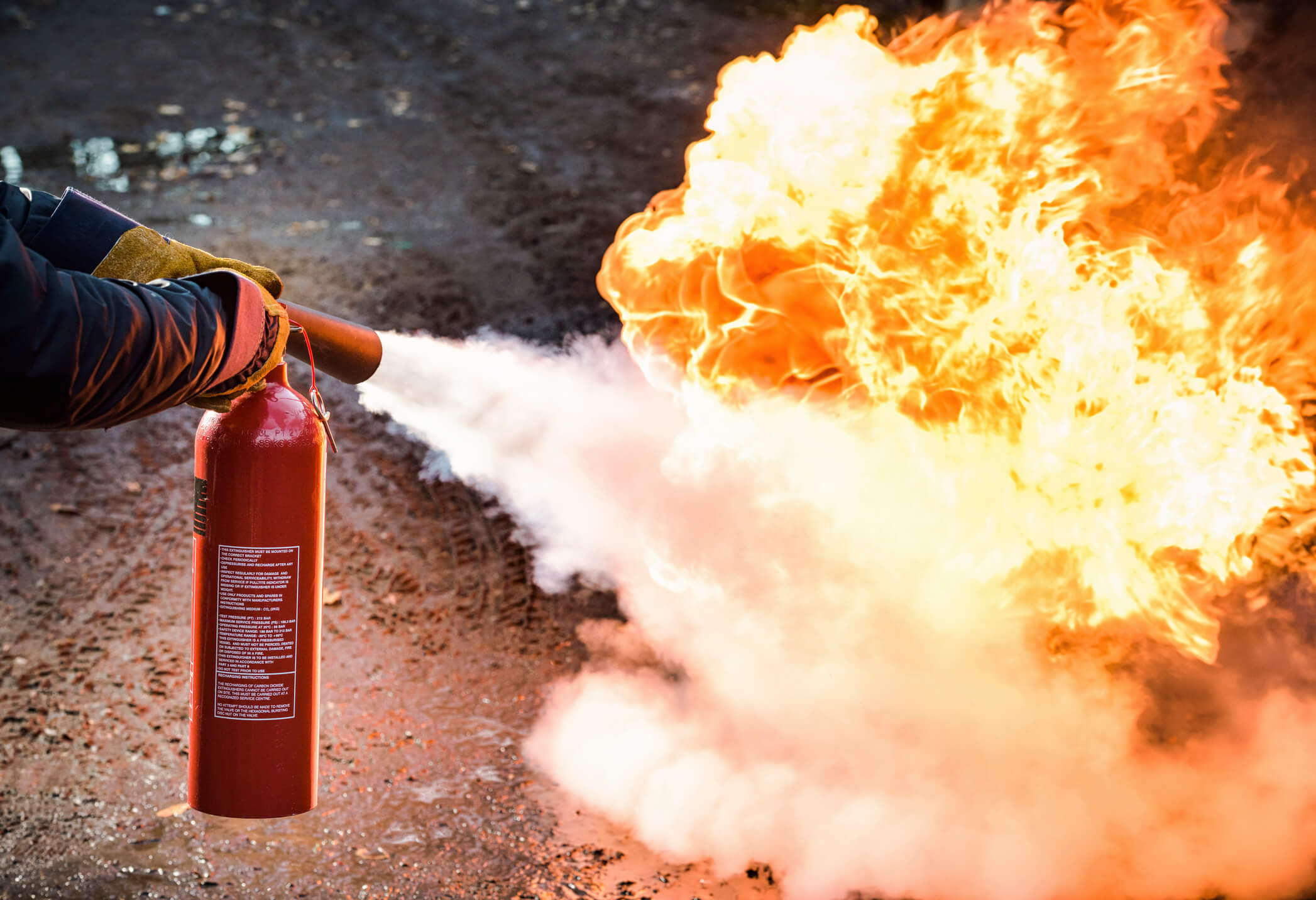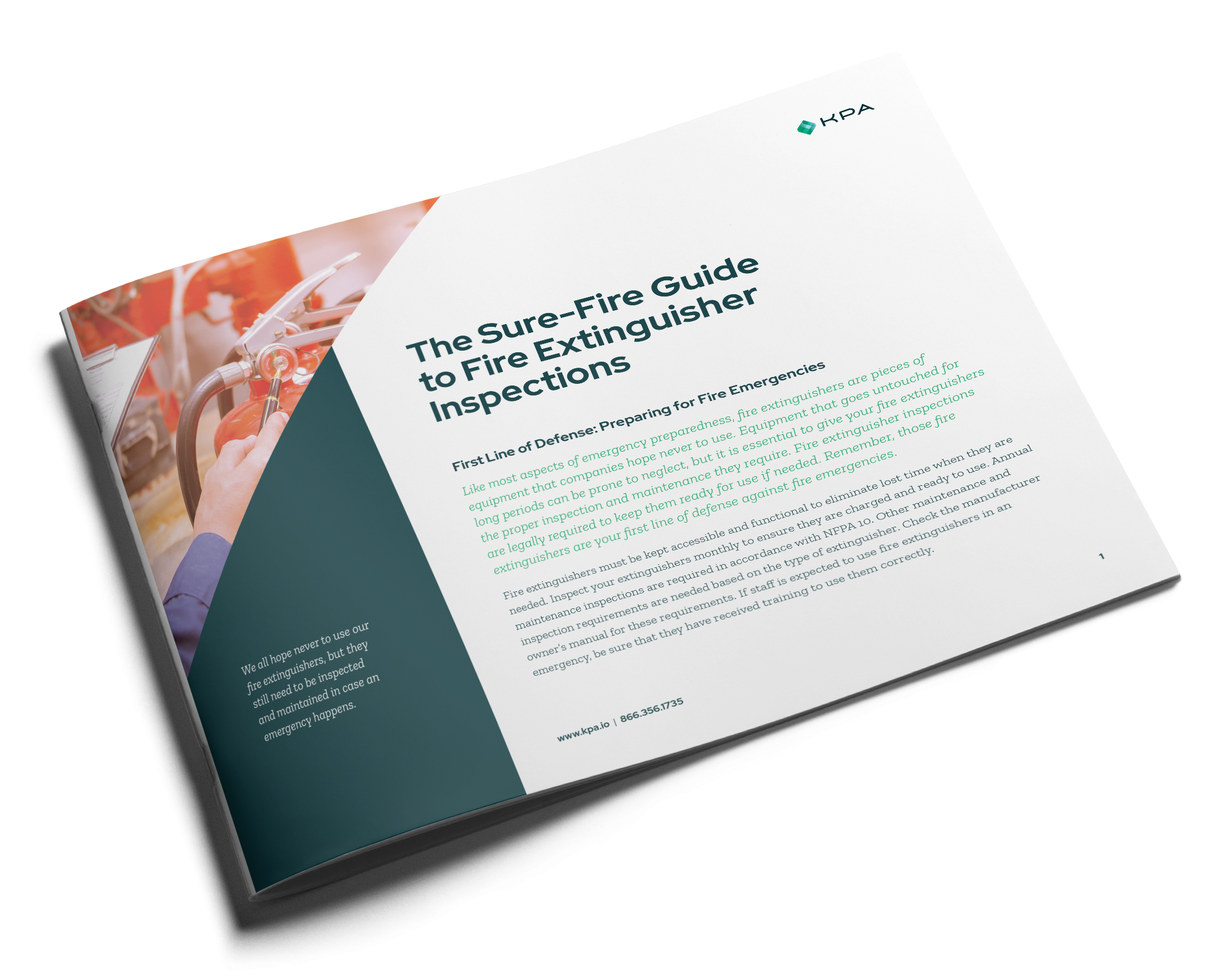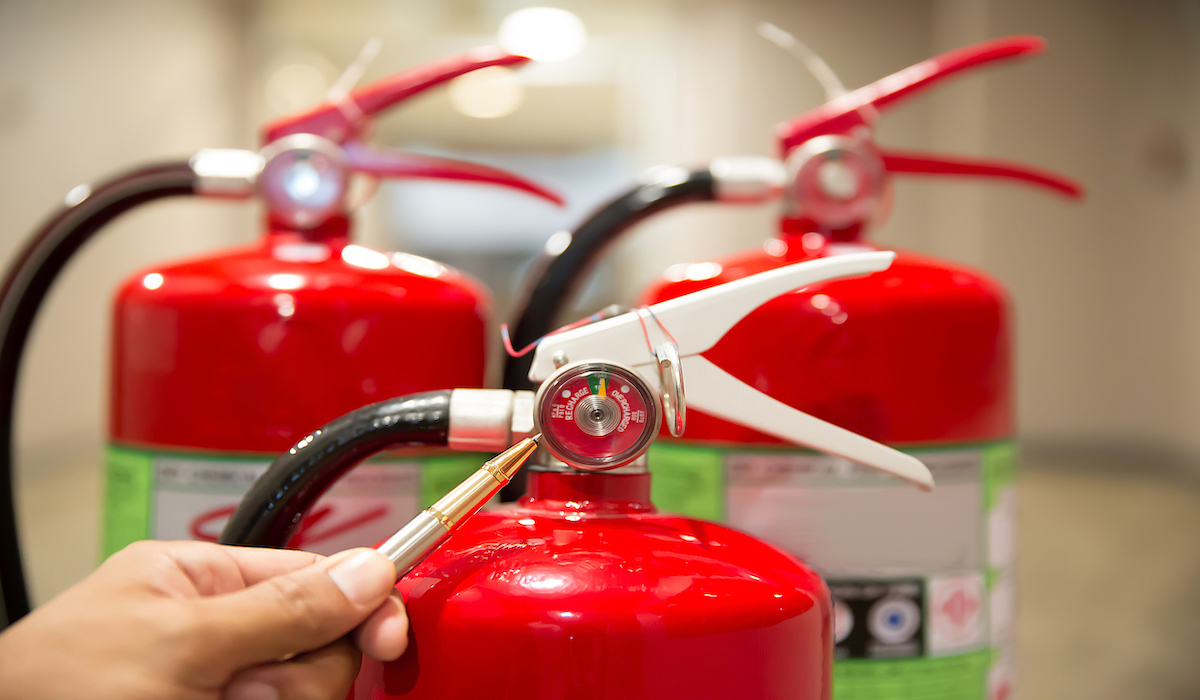Have you inspected your fire extinguishers lately? Are they fully charged, strategically located, accessible, and ready for use? Or, are they covered with dust and hidden in a corner where they create a false sense of security?
Fire extinguishers are often purchased with enthusiasm and then forgotten because they are not needed.
It is a good thing that they have not been needed, but they still need proper inspection and maintenance. Not only is this a legal requirement, but ensures they are ready to use if needed!
Your First Line of Defense: Preparing for Fire Emergencies
Like most aspects of emergency preparedness, fire extinguishers are pieces of equipment that companies hope never to use. Equipment that goes untouched for long periods can be prone to neglect, but it is essential to give your fire extinguishers the proper inspection and maintenance they require. Fire extinguisher inspections are legally required to keep them ready for use if needed. Remember, those fire extinguishers are your first line of defense against fire emergencies.


The Sure-Fire Guide to Fire Extinguisher Inspections
While we hope that fire extinguishers never have to be used, they still need to be inspected and maintained to ensure they are working properly in case an emergency occurs.
Other maintenance and inspection requirements are needed based on the type of extinguisher. Check the manufacturer owner’s manual for these requirements. If staff is expected to use fire extinguishers in an emergency, ensure they have received training to use them correctly.
Fire extinguishers must be kept accessible and functional to eliminate lost time when they are needed. Inspect your extinguishers monthly to ensure they are charged and in ready-to-use condition. Annual maintenance inspections are required in accordance with NFPA 10. Other maintenance and inspection requirements are required based on the type of extinguisher. Check the manufacturer owner’s manual for these requirements.
Also, if staff will be expected to use fire extinguishers in an emergency, be sure that they have received training on how to use them correctly.
Do you have the proper Class of extinguisher for the kinds of materials that are most likely to burn in your operation?
Here’s a list of the different classes of fires and the recommended fire extinguishers used for each.
The correlation is very straightforward:
Class A fires require Class A extinguishers,
Class B fires require Class B extinguishers, etc.
- Class A Fires:
Involve ordinary combustibles such as paper, plastic, rags, and wood. - Class B Fires:
Involve flammable liquids such as oil, grease, gasoline, and paint. - Class C Fires:
Involve electrical equipment such as motors, heaters, and office machines. - Class D Fires:
Involve combustible metals such as magnesium, aluminum, sodium, and potassium. - Class K Fires:
Involve combustible cooking fluids such as oils and fats.
Some types of fire extinguishers have multiple ratings, which makes them usable for different classes of fires. But remember, if you do not know what kind of materials are burning or if you do not have the proper class of extinguisher, do not try to fight the fire; evacuate immediately.
How Often to Inspect Your Fire Extinguishers
So you know you must keep up with your fire extinguisher inspections. But how often should you be performing them? To keep your fire extinguishers operational and legal, you should inspect them monthly and annually.
Annual Fire Extinguisher Inspection
OSHA (29 CFR 1910.157(e)(3) also requires an annual fire extinguisher maintenance inspection which a professional fire extinguisher company must perform. Depending on the type
of fire extinguisher, it may also require a 5-year, 6-year, or 12-year inspection or replacement.
Monthly Fire Extinguisher Inspection
A monthly fire extinguisher inspection is a quick visual inspection done by an employee as required by OSHA (29 CFR 1910.157(e)(2)). Areas include inspecting the handle, pull pin, gauge, seal, labels, mounting bracket, and more. Download the monthly inspection checklist to get started.
KPA Can Help You Strengthen Your First Line of Defense Against Fires
KPA’s technology, training, and consulting solutions are here to help you develop an efficient inspection program for all your equipment that’s engaging and easy for your employees to follow.
Imagine having an inspection checklist with you in the palm of your hand, with automatic alerts and follow-ups generated with each inspection. This checklist is a sample of the forms available in KPA EHS for you to use and customize to fit your policies and procedures.
KPA EHS offers a comprehensive and customizable library of forms for your team to fill out, including photos, attachments, signatures, GPS, follow-up tracking, offline reporting, and alerts.
Want help strengthening your fire extinguisher inspection program? KPA’s here for you.
Related Content
Explore more comprehensive articles, specialized guides, and insightful interviews selected, offering fresh insights, data-driven analysis, and expert perspectives.


